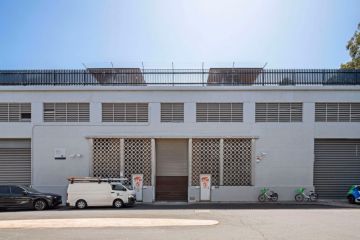Renovations for renters

You might have a knack for decorating and some building skills, but that doesn’t mean you can set to work straight away without landlord approval. While there are some things that can be done to your own taste, in other instances you’ll need landlord consent first.
For some areas of the home, the obligation is on the landlord to ensure the property maintains a certain standard – so you may be better off keeping those dollars in your own pocket.
Here’s a rundown of what you generally can and can’t do.
Can’t change: Wall colour
Unless your landlord agrees, you cannot repaint your premises. If you’ve rented the premises for a long time and there is normal wear and tear, you may ask your landlord to repaint the property at his or her expense in accordance with the terms of the lease, but you can’t ask them to change the colour simply because it doesn’t match your decor.
A friendly landlord may allow you to repaint the interior, but this will generally be to their standard and at your expense.
Change instead: Furnishings
The easiest and most stress-free way to freshen a daggy premises is to add your own touches of new furnishings and fittings. Curtains, cushions and accessories can enhance the space and create a cohesive look.
Provided that the furnishings are not included in the lease, you can update the colour scheme or style by upgrading your own furniture.
And the best part of this kind of aesthetic renovation is that you can take the property with you when you move to your next rental or buy.
Can’t add: Hanging nails or holes
Drilling into walls is a big no-no and will almost always require a landlord’s consent. The good news is that in NSW, recent legislative changes mean that the landlord cannot unreasonably withhold consent for such minor alterations.
Add instead: 3M Command strips
Since these nifty little strips have hit the market, they have been a renter’s dream. The beauty of 3M Command strips is that, when applied correctly, they will leave no marks on existing walls.
This makes them great for adding wall art to a rental property.
You can also hang wall art using existing hooks and nails, as no further drilling is required. Just make sure you have a comprehensive inspection report that notes all pre-existing features to avoid any arguments later on.
Can’t change: Floors
Ripping up existing flooring is a major alteration – and one that will need landlord consent.
If the carpet has seen better days due to normal wear and tear since you’ve lived there, you may be able to get the landlord to replace it under the lease. This would be at the landlord’s expense because it is their legal obligation.
If, however, you’ve just moved in, then you’ve generally taken the property as is and subject to its existing condition.
Use instead: Oversized rugs
You can disguise existing flooring using an oversized rug of your choice – no permission required.
A large rug hides many imperfections and can update an old room instantly.
IKEA stocks a range of oversized and affordable rugs, which may be enough to give that room the lift it needs.
Can’t change: Kitchen
You’ve moved into a dated premises but now want a new kitchen? Forget it – unless your kitchen doesn’t serve its purpose or you obtain landlord approval.
Change instead: Fitted appliances
If your oven or stove (or any other fitted appliances under the lease) are not working, require repair or are faulty, be sure to let the landlord know immediately. This is the landlord’s responsibility to repair or replace.
Can’t change: Fixtures
Unfortunately, as soon as you start considering drilling holes or pulling things out of walls or floors, you will need landlord consent.
You might want to replace the kitchen benchtop, for example, and may even be prepared to pay for it – but you’ll need to run it by the landlord first.
The good news, however, is that due to recent legislative changes in some states like NSW, a landlord cannot unreasonably withhold his or her consent.
What’s required in getting landlord approval?
The best way to get landlord consent is in writing. That way, if there is any confusion as to the terms of the renovation, you’ve got it on paper.
Are any other approvals required?
For some properties, such as apartments, you may need more than just the landlord’s approval.
If, for example, your renovation will affect services to existing apartments, or change the exterior of the premises, you’ll also need consent from the other owner-occupiers. You’ll need to write to body corporate and the matter may be voted upon at the next general meeting.
Am I entitled to compensation?
Where the repair or renovation is a landlord obligation under the lease, you can ask the landlord to reimburse you for reasonable costs incurred. However, you’ll need to produce invoices. And if the amount is unreasonable, the landlord may object to the reimbursement. The easiest way to deal with these matters is to have the landlord take care of such repairs directly.
While the legislation and agreements differ in every state and territory, the fundamental principle remains the same: obtain landlord consent to be on the safe side.
We recommend
We thought you might like
States
Capital Cities
Capital Cities - Rentals
Popular Areas
Allhomes
More







